| Botanical Name |
|
| Family |
Aloeaceae - The aloe family. |
| Pronunciation |
|
| Common Name(s) |
Afrikaans: Kleinaalwyn; Duine-aalwyn
|
| Plant Group |
- Succulent A plant having fleshy stems or leaves often adapted to dry conditions.
|
| Plant Size |
- Small
| Tree | 4m to 8m |
| Shrub | 50cm to 75cm |
| Perennial/ground cover | 10cm to 20cm |
| Bulb | 20cm to 30cm |
| Succulent | 10cm to 20cm |
|
| Position |
- Light or Dappled Shade Found below trees with sparse, open foliage. Ideal for the protection of herbaceous plants.
- Partial Shade The area is in shade for part of the day and in full sun for part of the day.
- Sun The area is in full sun for all or most of the day, all year round.
|
| General Information |
- Drought Tolerance: Moderate The plant is moderately adapted to arid conditions and can survive short periods of drought and high temperatures without extra water.
- Evergreen Plants that have leaves all year round.
- Frost: Half-hardy The plant is able to survive low temperatures and some frost but requires protection against severe frost.
- Thorns / Spines / Prickles Thorn: A hard, woody, pointed branchlet.
Spine: A modified leaf forming a hard, sharp-pointed outgrowth.
Prickle: A small, sharp-pointed outgrowth growing from the bark of the plant.
- Water Moderate These plants will need some extra watering compared to water-wise plants. Plant them together, in at least some shade and in a convenient proximity to the house so that grey water can be utilised during times of drought.
|
| Specific Information |
Aloe brevifolia is a miniature or dwarf aloe with very compact rosettes about 80 - 100 cm in diameter, Aloe brevifolia is a coastal species. It forms clumps of about 10 neat rosettes with leaves that build up on each other to about 30 c m tall. Leaves are pale, waxy blue-green or grey, with triangular white spines on the edges.. A few spines may also be found on the underside of the leaf. It is found in areas with relatively high annual rainfall (approximately 400 mm annually), and is more cold and moisture tolerant than most other aloes, but bear in mind that it gets most of its rainfall in winter, not summer. It will tolerate a little frost but not freezing weather conditions.
There are three varieties of Aloe brevifolia based predominantly on size and location: depressa - the largest, growing up to 300 mm in diameter; postgenita - of medium size; and the commonly cultivated brevifolia.
Aloe brevifolia is classed on the SANBI Red List of South African Plants as Vulnerable. At least 80% of its habitat has been lost to wheat cultivation and the decline of this plant in its natural habitat is ongoing due to alien plant invasion, livestock trampling and collection for horticultural purposes.
|
| Ad Break |
|
| Flowers |
| Description |
tubular flowers on an unbranched, stout stem of 40 cm
|
| Season |
- Spring to Summer Plants will seldom bloom for the entire season as given in the list, but should flower during a period within these parameters.
|
| Colour |
|
| Growth Rate |
- Moderate to Fast Specifying growth rate can be very misleading as there is considerable variation of growth rate depending on type and species of plant, available water, supplementary feeding, mulching and general care, as well as the plants suitability and adaptability to the garden environment.
|
| Plant Uses |
- Attracts bees, butterflies or other insects This plant attracts insects which can be food for birds or other creatures in your garden.
- Attracts Birds This plant will attract birds.
- Container Trees, shrubs and ornamental species that can adapt to growing in a restricted environment.
- Edging A low growing plant that provides softness or definition to the edges of a bed or walkway.
- Filler Either a fast growing tree or shrub used temporarily to fill in an area while the permanent plants grow to a desired size, or a plant used to fill gaps in borders or beds.
- Pot Plant A plant that needs a protected environment on a patio or indoors.
- Rock Garden An area constructed of larger rocks, arranged naturally, to emphasise the use of stones as a main element. Generally plants used do not need a lot of care.
- Suitable for coastal gardens Plants adapted to dry, sandy soil, forceful wind, limited rainfall and intense sunlight.
- Suitable for smaller gardens Such plants do not have invasive root systems, remain small or controllable and can often be grown in containers.
|
| Distribution and Habitat |
from Caledon and Bredarsdorp to the Riversdale area in the Western Cape Province, in stony clay soil on koppies and rocky ridges
|
| Planting Suggestions |
Aloe brevifolia grows best in well-drained soil in half to full sunlight. Easy to grow from young offshoots which root readily, or from seed. Prefers alkaline soil.
|
| Medicinal Uses |
|
| Ad Break |
|


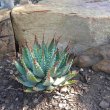
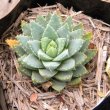
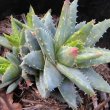
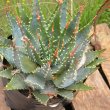
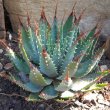


Discuss this plant
Share knowledge, ask a question or give an experience.